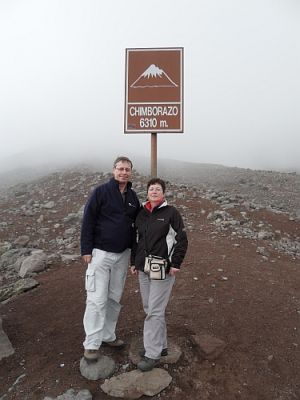Dona Meadows writes a thought-provoking bi-weekly column called "The Global Citizen". Here is something she published recently.
If the world were a village of 1,000 people, it would include:
- 584 Asians
- 124 Africans
- 95 East and West Europeans
- 84 Latin Americans
- 55 Soviets (including for the moment Lithuanians, Latvians, Estonians and other national groups)
- 52 North Americans
- 6 Australians and New Zealanders
The people of the village have considerable difficulty in communicating:
- 165 people speak Mandarin
- 86 English
- 83 Hindi/Urdu
- 64 Spanish
- 58 Russian
- 37 Arabic
That list accounts for the mother tongues of only half the villagers. The other half speak (in descending order of frequency) Bengali, Portuguese, Indonesian, Japanese, German, French and 200 other languages.
In this village of 1,000 there are:
- 329 Christians (among them 187 Catholics, 84 Protestants, 31 Orthodox)
- 178 Moslems
- 167 "non-religious"
- l32 Hindus
- 60 Buddhists
- 45 atheists
- 3 Jews
- 86 all other religions
- One-third (330) of the 1,000 people in the world village are children and only 60 are over the age of 65. Half the children are immunized against preventable infectious diseases such as measles and polio.
- Just under half of the married women in the village have access to and use modern contraceptives.
- This year 28 babies will be born. Ten people will die, 3 of them for lack of food, 1 from cancer, 2 of the deaths are of babies born within the year. One person of the 1,000 is infected with the HIV virus; that person most likely has not yet developed a full-blown case of AIDS.
- With the 28 births and 10 deaths, the population of the village next year will be 1,018.
In this 1,000-person community, 200 people receive 75 percent of the income; another 200 receive only 2 percent of the income. - Only 70 people of the 1,000 own an automobile (although some of the 70 own more than one automobile).
- About one-third have access to clean, safe drinking water.
- Of the 670 adults in the village, half are illiterate.
The village has six acres of land per person, 6,000 acres in all, of which
- 700 acres are cropland
- 1,400 acres pasture
- 1,900 acres woodland
- 2,000 acres desert, tundra, pavement and other wasteland
- The woodland is declining rapidly; the wasteland is increasing. The other land categories are roughly stable.
The village allocates 83 percent of its fertilizer to 40 percent of its cropland - that owned by the richest and best-fed 270 people. Excess fertilizer running off this land causes pollution in lakes and wells. The remaining 60 percent of the land, with its 17 percent of the fertilizer, produces 28 percent of the food grains and feeds 73 percent of the people. The average grain yield on that land is one-third the harvest achieved by the richer villagers.
In the village of 1,000 people, there are:
- 5 soldiers
- 7 teachers
- 1 doctor
- 3 refugees driven from home by war or drought
The village has a total budget each year, public and private, of over $3 million - $3,000 per person if it is distributed evenly (which, we have already seen, it isn't).
Of the total $3 million:
- $181,000 goes to weapons and warfare
- $159,000 for education
- $l32,000 for health care
The village has buried beneath it enough explosive power in nuclear weapons to blow itself to smithereens many times over. These weapons are under the control of just 100 of the people. The other 900 people are watching them with deep anxiety, wondering whether they can learn to get along together; and if they do, whether they might set off the weapons anyway through inattention or technical bungling; and, if they ever decide to dismantle the weapons, where in the world village they would dispose of the radioactive materials of which the weapons are made.
Dona Meadows has written a regular bi-weekly column called "The Global Citizen" that are equally thought provoking


















